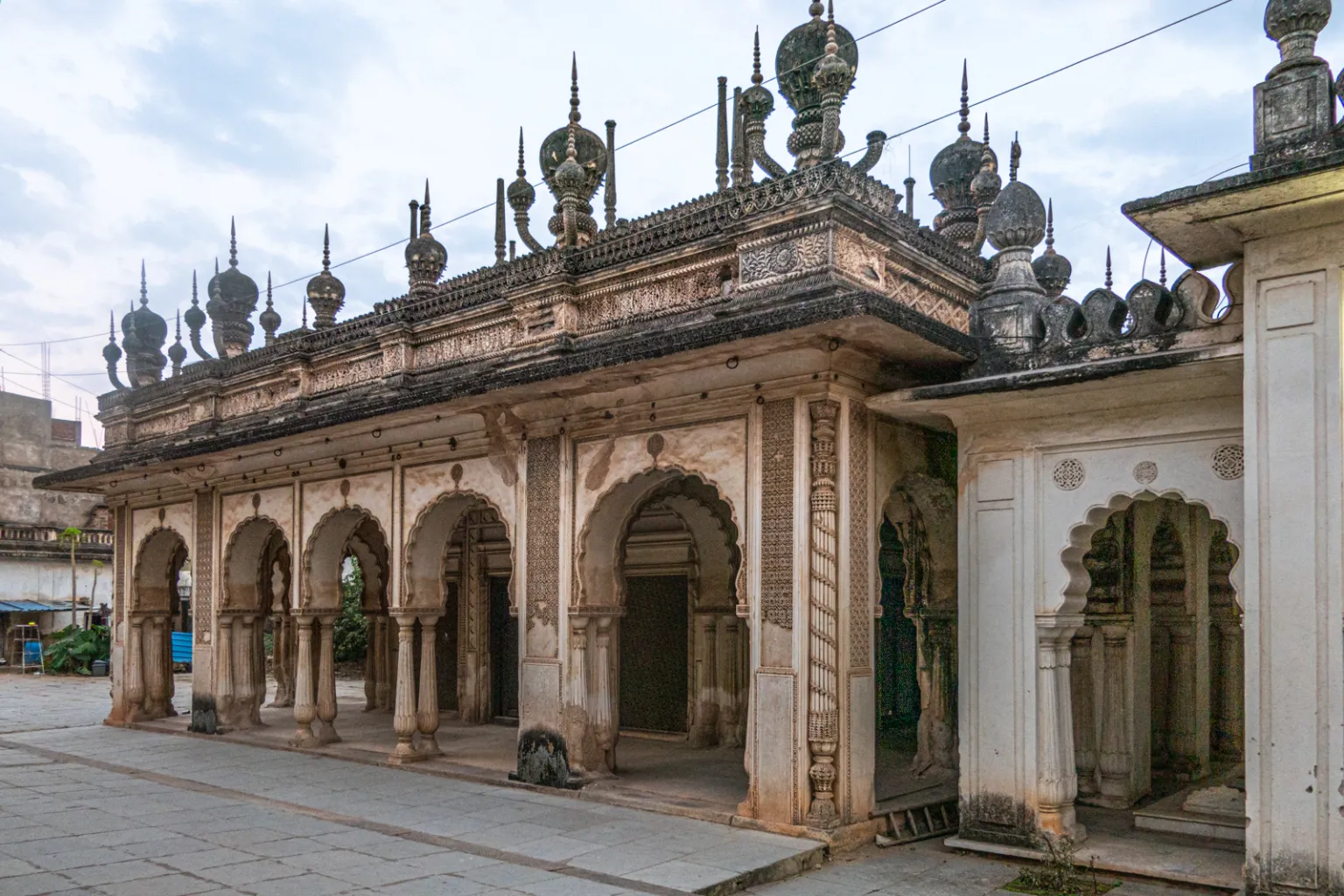11 Jan 2023 Paigah Tombs Complex
Paigah Tombs Complex
This article covers “Daily current events “and the topic is about ‘Paigah Tombs Complex’ which is in news, it covers the “Art And culture” In GS-1, and following content has relevance for UPSC.
For Prelims: About Paigah tomb
For Mains:GS-1, Art and Culture
Why in news:
With support from the US Ambassadors Fund for Cultural Preservation, Hyderabad’s Paigah Tombs Complex, a necropolis of noblemen from the Asaf Jahi era, will be restored.
About Paigah Tombs
- The Paigah Tombs are the graves of the noble Paigah family, fierce allies of the Nizams who served as generals, statesmen, and benefactors under and alongside them.
- They are one of the most well-known wonders of Hyderabad State, which is renowned for the quality of its architecture as seen by the mosaic tiles it has set and its artistry.
- The Paigah’s Necropolis is situated nearby Charminar Hyderabad in the Pisal Banda Suburb. These tombs are constructed of lime and mortar and have exquisite marble carvings inlaid throughout. These graves, date back 200 years and serve as the final resting places for multiple generations of Paigah Nobles.
History of Paigahs:
- The 200-year-old Paigah tombs serve as the ultimate resting places for multiple generations of Paigah Nobles.
- The Paigahs accompanied Emperor Aurangzeb as he conquered the Deccan region.
- Shams-ul-Umra I, often referred to as Nawaz Abul Fatah Khan Tegh, created the House of Paigah.
- Through matrimonial relationships, their ties to the Nizams were strengthened even more.
- They also built a number of palaces in the city, the most prominent of which are the Falaknuma Palace, Asman Garh Palace, Khursheed Jah Devdi, and Vicar-ul-Umarahi palaces.
- They were thought to be wealthier than the typical Maharajah in the nation.
- The Paigahs, who were renowned art patrons, extended their unrivaled beauty and elegance to their magnificent graves. The Paigah Tombs are one of the many wonders that decorate the city and appear in the most enticing historical accounts.
- The mosaic tile work that has been inlaid demonstrates the magnificent artistry of the Paigahs. The first person to be interred there was Abdul Fateh Khan Tegh Jung in 1786.
- This location later became the family maqbara, which was constructed according to the generations of the family members and was largely renovated by his son Amir-e-Kabir I (some additions were made by Sir Asman Jah, Sir Khurshid Jah, and Sir Vikar Ul Umra in the 1880s).

Paigah Tombs
Architecture:
- These tombs have lovely marble carvings set into their lime and mortar construction.
- It is made up of exquisite marble tile works with floral carvings and themes.
- It shows Indo-Islamic architecture, which is a fusion of the Rajputana and Asaf Jahi architectural traditions.
- The Mughal, Persian, and Deccan styles are all represented well in the stucco (plaster) work.
- Each tomb has been exquisitely carved, making them all priceless works of art. These buildings’ stuccowork is intricately detailed.
- The geometrical carvings on them have helped them grow to be quite well-liked. Along with the geometric patterns, there are also very elaborate and lovely flower patterns, trellis marble fencing, and canopies.
- Most tourists visit the tombs of Asman Jah and Begum Khurshid Jah. The marble constructions were formerly embellished with precious and semi-precious stones, whose colors changed with the seasons.
- A wall that surrounds the tombs is embellished with latticework, and exotic floral, and geometric patterns. Different decorations, such as fruits, drums, serpents, flowers, vases, etc., are used on each wall.
Source


No Comments